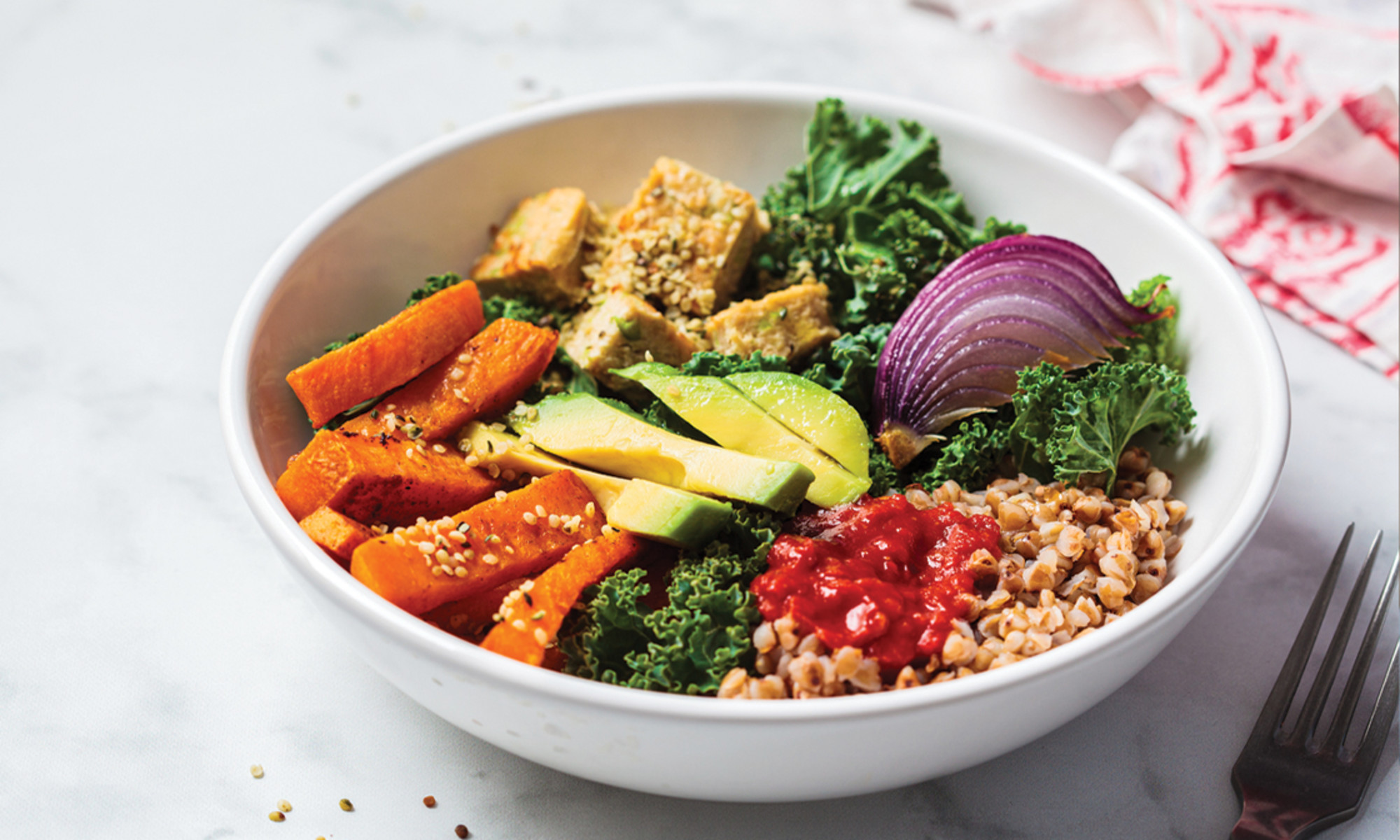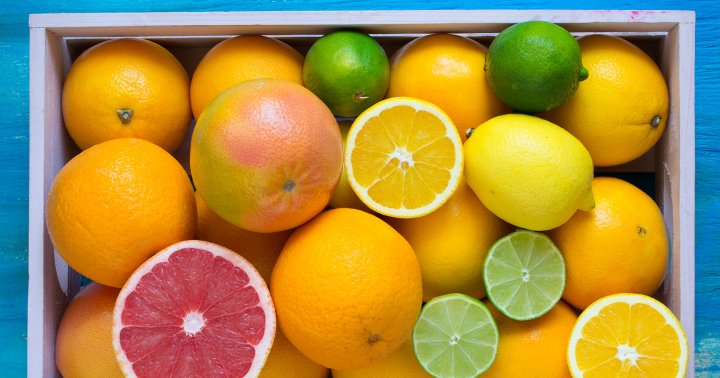Anti-Inflammatory Diet 101: Foods To Eat, Avoid, & A Sample Meal Plan
You're


Certified holistic nutrition consultant
Certified holistic nutrition consultant
Lindsay Boyers is a nutrition consultant specializing in elimination diets, gut health, and food sensitivities. Lindsay earned a degree in food & nutrition from Framingham State University, and she holds a Certificate in Holistic Nutrition Consulting from the American College of Healthcare Sciences.

Expert review by
Lauren Torrisi-Gorra, M.S., RD
Registered Dietitian
Lauren Torrisi-Gorra is a Registered Dietitian with a Grand Diplôme in Culinary Arts from the French Culinary Institute and a bachelor’s in Communication and Media Studies from Fordham University. After a decade working in the culinary and media worlds, Lauren pursued her ultimate passion and received her master's degree in Clinical Nutrition and Dietetics at New York University.
Image by vaaseenaa / iStock November 24, 2022 Our editors have independently chosen the products listed on this page. If you purchase something mentioned in this article, we may Chronic inflammation is a cause, and catalyst, for many common diseases, including stroke, cardiorespiratory issues, and diabetes. It’s also linked to weight gain and obesity. And the foods you eat can trigger this inflammation1 in a number of ways. Following an anti-inflammatory diet meal plan can help combat chronic inflammation2, potentially slowing and or reversing these disease states and promoting longevity—not to mention making you feel better and happier overall.
Advertisement
This ad is displayed using third party content and we do not control its accessibility features.
The good news is that an anti-inflammatory diet is pretty easy to follow. We talked to a handful of qualified nutrition experts to learn more about the diet and provide some fun tips on how you can try it at home.What is the anti-inflammatory diet?
The anti-inflammatory "diet" isn’t a specific diet, per se. It’s more of a set of dietary guidelines that focuses on reducing and/or preventing chronic inflammation in your body.
“Overall, an anti-inflammatory diet consists of eating foods that are primarily anti-inflammatory and avoiding foods that are pro-inflammatory in nature,” says Pooja Mahtani, PharmD, MS, CNS, LDN, IFMCP, a licensed dietitian-nutritionist specializing in functional nutrition.
“While there are general guidelines for what foods are considered anti-inflammatory vs. pro-inflammatory, it truly must be personalized for the individual. Foods that are inflammatory to one person may be completely safe for another individual.”
That being said, there are two general principles3 of an anti-inflammatory diet: Eat whole foods that are rich in healthy fats and phytonutrients and maintain a stable glycemic response (i.e. avoid blood sugar spikes and drops).
Summary
The anti-inflammatory diet is an eating plan that's low in foods that trigger inflammation in most people.
Advertisement
This ad is displayed using third party content and we do not control its accessibility features.
Benefits of the anti inflammatory diet.
To understand the benefits of the anti-inflammatory diet, it’s helpful to define chronic inflammation and how it can contribute to poor health.
“Inflammation is a byproduct of immune system surveillance. If the immune system suspects something is off, it will begin to deploy its soldiers, which can then unleash inflammatory mediators at a specific site in the body to 'resolve' the issue,” says Mahtani. “If the issue isn't because of an acute injury or infection and instead is due to a chronic inflammatory diet, the inflammation will continue to persist as long as this inflammatory diet is consumed.”
Over time, this chronic inflammation can damage healthy tissues and organs in the body, contributing to the following:
Advertisement
This ad is displayed using third party content and we do not control its accessibility features.
On the other hand, “Dampening inflammation can reduce the burden of chronic disease, improve your overall health and wellbeing, and revitalize your spirit,” says Mahtani.
Eating an anti-inflammatory diet has been shown to protect against certain diseases10, as well as contribute to longevity and slow the aging process11. It’s also connected to a better mood and a lower incidence of mental health disorders12.
In one review published in the Journal of Health, Population, and Nutrition13 in 2022, researchers reported that long-term adherence to an anti-inflammatory diet could prevent depression and anxiety, while eating lots of pro-inflammatory foods could promote and exacerbate these mental health conditions.
Summary
Following an anti-inflammatory diet can reduce your risk of chronic inflammation, which contributes to cardiorespiratory diseases, cognitive diseases, and even cancer.
Anti-inflammatory foods list.
Everyone reacts differently to food on some level. What may be healthy for one person may not work for another with food sensitivities. However, there are certain foods that are considered anti-inflammatory for most people. Those foods include:
Advertisement
This ad is displayed using third party content and we do not control its accessibility features.
Inflammatory foods list.
At the opposite end of the spectrum are pro-inflammatory foods. The overarching theme here is that processed foods, sugar, and low-quality fats tend to set off an inflammatory response in the body.
Here’s a more comprehensive breakdown of the foods you should avoid (or limit as much as possible) on an anti-inflammatory diet:
Advertisement
This ad is displayed using third party content and we do not control its accessibility features.
“In many individuals, gluten, dairy, soy, and corn are often inflammatory triggers as well,” adds Mahtani.
7-day plant-based anti-inflammatory diet meal plan.
If you want to start an anti-inflammatory diet, mbg’s got you covered with plant-based recipes that you can tailor to your own dietary needs and preferences.
Here's your 7-day meal plan that consists of a daily breakfast, lunch, dinner, and snack, as well as some nutritionist tips for how to easily adjust the meals to make them your own.
Day 1:
Make it your own: The easiest thing to do is start to mix variety into your diet,” says functional dietitian Meg Gerber, RD, LD, IFNCP, CGN. “Variety can mean something as simple as a variety of colors—think carrots, tomatoes, and lemons.” You can start with a simple recipe like the Lemon Lentil Salad and add different veggies or proteins, or even orange in place of lemon, to switch things up or tailor it to your own preferences.
Day 2:
Make it your own: To add variety and keep your tastebuds happy, Gerber recommends changing up your spices and flavors too. You can easily add a different herb and spice mix to the Sheet Pan Provençale Vegetables dish, or try switching up the protein (i.e. using chickpeas instead of beans).
Day 3:
Make it your own: “An anti-inflammatory diet does not mean cutting out an entire food group, or limiting your options so that you feel restricted. If anything, anti-inflammation is about adding whole foods, minerals, and spices to your diet,” says Gerber. You can use shredded carrots in place of zucchini in the Zucchini Bread recipe, or try butternut or acorn squash in place of pumpkin when making the soup.
Day 4:
Make it your own: Roasted chickpeas are an excellent anti-inflammatory snack that’s easy to adapt to your tastes—and to make them even more anti-inflammatory. Try adding turmeric, which has been shown to combat inflammation14, to this Everything Chickpeas recipe.
Day 5:
Make it your own: Smoothies are an easy opportunity to add fruits, vegetables, and even fresh herbs to your diet. “Fresh herbs are fantastic because they are some of the most potent sources of antioxidants. Some of my personal favorites are cumin, parsley, and cilantro,” says Gerber. While cumin might overpower a green smoothie, parsley and cilantro are excellent additions.
Day 6:
Make it your own: You can swap different beans into your salad to mix things up, and even try your hand at sprouting them to maximize the health benefits.
Day 7:
Make it your own: Gerber says that bone broth can be rich in vitamin A15 and omega-3 fatty acids16, two nutrients that are key in mitigating inflammation. If you’re not a strict vegetarian—but simply looking to add more plant-based foods to your diet—you can make the white bean soup with bone broth instead of vegetable broth to up its mineral content.
Frequently Asked Questions
What are some affordable anti-inflammatory foods?
Fruits, vegetables, beans, and lentils are all affordable anti-inflammatory foods that are easy to incorporate into your meals. These foods are often available in bulk and/or in the freezer aisle, too.
What meals are good for inflammation?
Fiber-rich meals that also contain healthy fats like avocado and olive oil are good for inflammation. You can start with the mbg recipes on this page, or dig into Mediterranean diet recipes for more ideas. If you want to maximize the benefits, you can try a lower-carb approach, like the Mediterranean keto diet. You’ll get all the benefits of fiber and high-quality protein while keeping your blood sugar more stable.
What snacks are anti-inflammatory?
Some go-to anti-inflammatory snacks are sliced up veggies dipped in hummus, high-fiber fruit like an apple with almond butter, roasted chickpeas, guacamole with grain-free chips, and no-bake chocolate fudge. You can also have a small salad or sliced avocado drizzled with high-quality olive oil.
The takeaway.
An anti-inflammatory diet isn’t a specific plan, but rather a set of guidelines that focuses on removing foods that cause inflammation and adding foods that fight against it. While everyone is slightly different, for most people, an anti-inflammatory diet consists of plenty of fiber-rich plant foods combined with healthy, high-quality fats.
If you need more guidance on building out a meal plan, check out these anti-inflammatory eating tips.

 JaneWalter
JaneWalter 






























.jpg&h=630&w=1200&q=100&v=6e07dc5773&c=1)

